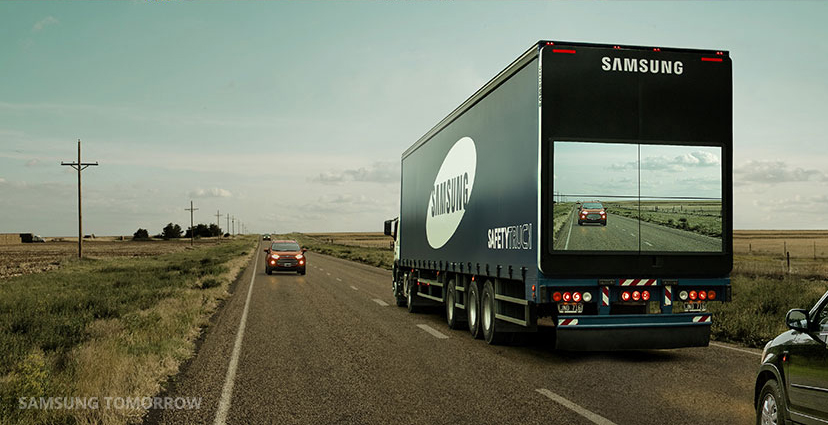There is a growing trend amongst regulators and taxing authorities at the federal and state levels to attempt to recapture what they believe is lost revenue from the manipulation of leased labor scenarios. Regulators are increasingly trying to look past contracts and business structures, looking to foil employer dodges that minimize exposure to employment liabilities including Unemployment Compensation, Workers Compensation and Healthcare Benefits.
In this short article we will give you a few examples of where things seem to be headed. Keep in mind every jurisdiction (you’re always in at least two) is different, and that you must use a layered analysis to determine what the best course of action is. (see our previous article on overtime and truck driver pay for an example of the Federal – State interplay) The layers here just become multidimensional with all the separate payroll taxes and employer liabilities.

Your company should have in place and regularly update strong contract language to decisively handle and parse the issues. Strong contracts require the input of legal, financial, and human resource specialists, and should be re-evaluated from the ground up at each renewal. Further your staffing firm should be knowledgeable and agile as well, bringing their knowledge of best practices and battle tested language to the table. Neither party wants to discover their contracted agreement isn’t enforceable and that they inadvertently accepted a cost or liability.
Unfortunately the playing field is forever changing, both through court decisions and legislation. So contracts might not be honored on a given point. One example of such legislation comes from California, where a bill passed in September puts employers directly on the hook for employee wages and workers compensation premiums unpaid by the staffing firm who provided the labor.
Assembly Bill No. 1897
…..(b) A client employer shall share with a labor contractor all civil legal responsibility and civil liability for all workers supplied by that labor contractor for both of the following:
(1) The payment of wages.
(2) Failure to secure valid workers’ compensation coverage as required by Section 3700.
(c) A client employer shall not shift to the labor contractor any legal duties or liabilities under the provisions of Division 5 (commencing with Section 6300) with respect to workers supplied by the labor contractor….
Or, as the California Legislative Counsel Digest summarizes;
 “This bill would require a client employer to share with a labor contractor all civil legal responsibility and civil liability for all workers supplied by that labor contractor for the payment of wages and the failure to obtain valid workers’ compensation coverage. The bill would prohibit a client employer from shifting to the labor contractor legal duties or liabilities under workplace safety provisions with respect to workers provided by the labor contractor.”
“This bill would require a client employer to share with a labor contractor all civil legal responsibility and civil liability for all workers supplied by that labor contractor for the payment of wages and the failure to obtain valid workers’ compensation coverage. The bill would prohibit a client employer from shifting to the labor contractor legal duties or liabilities under workplace safety provisions with respect to workers provided by the labor contractor.”
One might argue that this type of “interference with contract” may ultimately run afoul of the Constitutional Right of Contract, but given the freedom states have to regulate these matters, we shouldn’t hold our collective breaths. Indeed, there is plenty of precedent for this type of statutory co-employment scenarios.
Many states are adopting Unemployment Compensation rating structures that use the higher experience modification of either the staffing firm or the employer. Thus an employer cannot escape a high unemployment tax rate by out sourcing the payroll, and conversely an employer’s bad ratings can eat into the staffing agencies margin on markup. For instance North Dakota says;
Long-term staffing services are required to report workers (on their quarterly
unemployment insurance tax reports) assigned to a client company using the client company’s unemployment insurance tax account number and, with certain exceptions, will pay taxes using the client company’s unemployment insurance tax rate. – North Dakota Employer’s Handbook
Then there is the overlay of the Affordable Care Act (ACA) and staffing scenarios. Take this excerpt below (we won’t hate you if you just skim it, we bolded the best part, where they tell you to operate with no guidance for the moment);
Shared Responsibility for Employers Regarding Health Coverage
The preamble to the proposed regulations notes that the application of section 4980H may be particularly challenging for temporary staffing firms and requested comments on certain specific areas relevant to temporary staffing firms, including whether new employees of a temporary staffing firm should be deemed or presumed to be variable hour employees for purposes of the look-back measurement method as well as whether special rules should apply to temporary staffing firms for purposes of determining when an employee has separated from service and the application of the rehire rules when an employee returns after a break in service. See section VII.E of the preamble for a discussion of the rehire rules.
Some commenters requested that new employees of a temporary staffing firm be deemed, or alternatively presumed, to be variable hour employees rather than full-time employees for purposes of the look-back measurement method. Other commenters opposed the use of any presumption that employees of temporary staffing firms are variable hour employees, arguing that some of these employees will work predictable schedules averaging at least 30 hours of service per week. Temporary staffing firms vary widely in the types of assignments they fill for their clients and in the anticipated assignments that a new employee will be offered. Accordingly, the final regulations do not adopt a generally applicable presumption…..
…Section II.D.3 of the preamble to the proposed regulations addresses two arrangements under which a client employer may use a temporary staffing firm to attempt to evade application of section 4980H. In one arrangement, the client employer purports to employ an employee for only part of a week, such as 20 hours, and to hire that same individual through a temporary staffing firm for the remaining hours of the week, and then claim that the individual was not a full-time employee of either the client employer or the temporary staffing firm. In the other arrangement, one temporary staffing firm purports to supply a client an individual as a worker for only part of a week, such as 20 hours, while a second temporary staffing firm purports to supply the same client the same individual for the remainder of the week, and then claim that the individual was not a full-time employee of the client or either of the temporary staffing firms. For these reasons and the reasons set forth in section II.D.3 of the preamble to the proposed regulations, the Treasury Department and the IRS continue to be concerned about these arrangements and anticipate that future guidance of general applicability, published in the Internal Revenue Bulletin (see § 601.601(d)(2)(ii)(b)), will address them.
Further the IRS has said (this actually sounds like guidance, and spells out a safe harbor);
“the final rules provide that if an employer pays an additional amount to a staffing agency under its staffing agency contract to ensure that the staffing agency is providing the individual with qualifying health insurance coverage, then this will qualify as the employer’s offer of coverage to meet the ACA’s requirements (e.g., if the individual is the employer’s common law employee under IRS standards)”. , Treas. Reg. § 54.4980H-4(b)(2)
So, now you have to worry about everyone’s healthcare? Maybe. We’ll wait and see.
What does this all mean?
So the bottom line is using leased labor to game unemployment rates, and dodge benefits packages is, if it ever was, not really a great reason to structure such an arrangement. However, there are still several major advantages which can create win-win scenarios for employers and staffing companies.
One is the “Try Before You Buy” factor. Leasing to hire gives the business a chance to try out an employee before making a permanent offer of employment. In some cases, a person may have the experience and education for a job but simply does not mesh well with the work environment. Having the opportunity to have the person work on a temporary basis first gives you a chance to evaluate how the person will fit in with the operation and other employees. It also provides time to identify any weaknesses that would not typically be evident in the interview and hire process. And in many instances and jurisdictions you can still be protected from unemployment compensation issues and liabilities.
Further we know that many accidents occur in the first 90 days of employment, so (thus far) your staffing company can absorb those workers compensation experience history and resulting modification rates. With trucking base rates being some of the highest, a small favorable bump downwards has a huge effect on the bottom line.
Leased labor also provides a crucial Recruiting Benefit especially in tight labor markets. If you had not noticed truck drivers are in short supply.
Truck drivers — the lack of them and the number of hours they can work — remain the top concern of trucking executives, the American Transportation Research Institute says.
Using one or more leased labor providers allows you to magnify your recruiting efforts, and satisfy business needs faster. Professional staffing agencies can expertly market jobs to passive prospects, who might not otherwise respond to or even look at job advertisements. Most companies do not have the time or expertise to tap this source of employees. Generating leads and finding drivers is something most operation managers can’t spend large amounts of time on.
So in closing, while using a staffing agency implicates more than a few legal and financial issues, and requires sophisticated planning by both parties, an agency is still a valuable resource for recruiting and hiring drivers. You just have to make sure that your agency is working with you to create solid contractual understandings and staying abreast of the evolving regulatory landscape.













